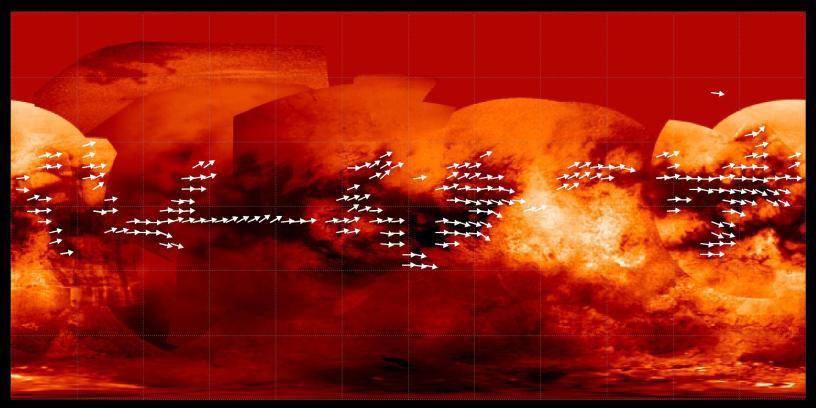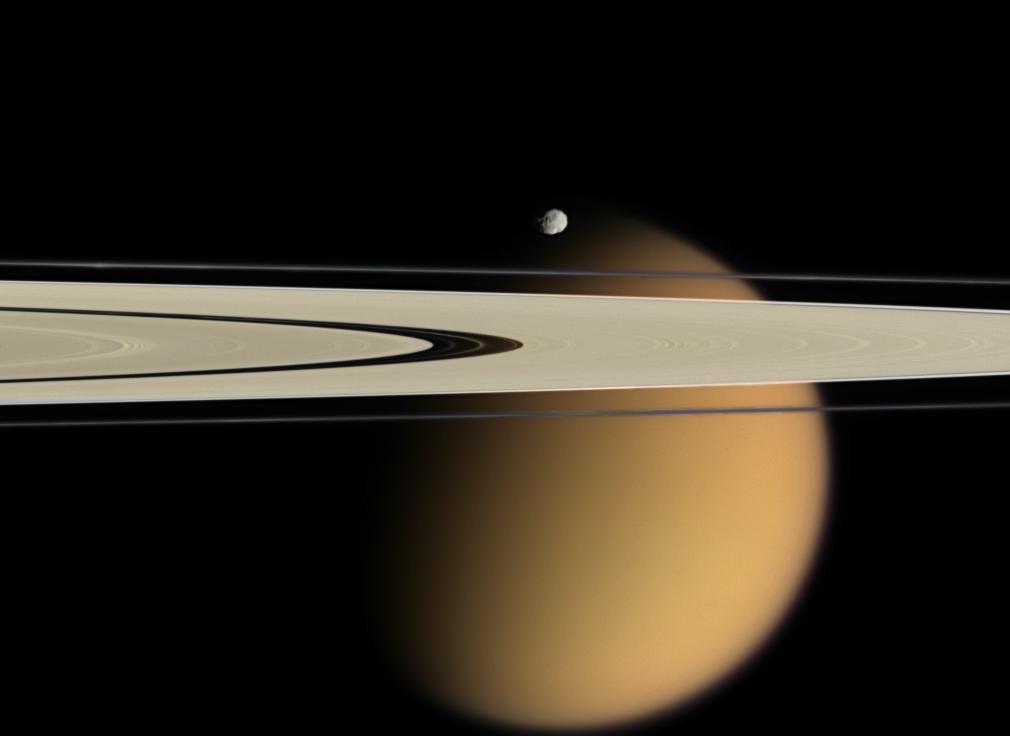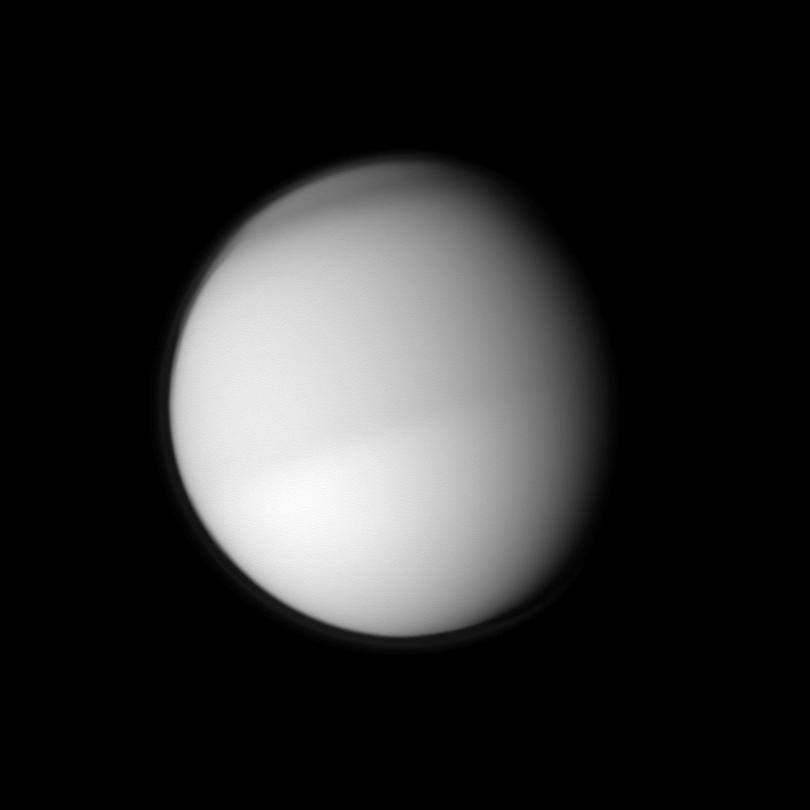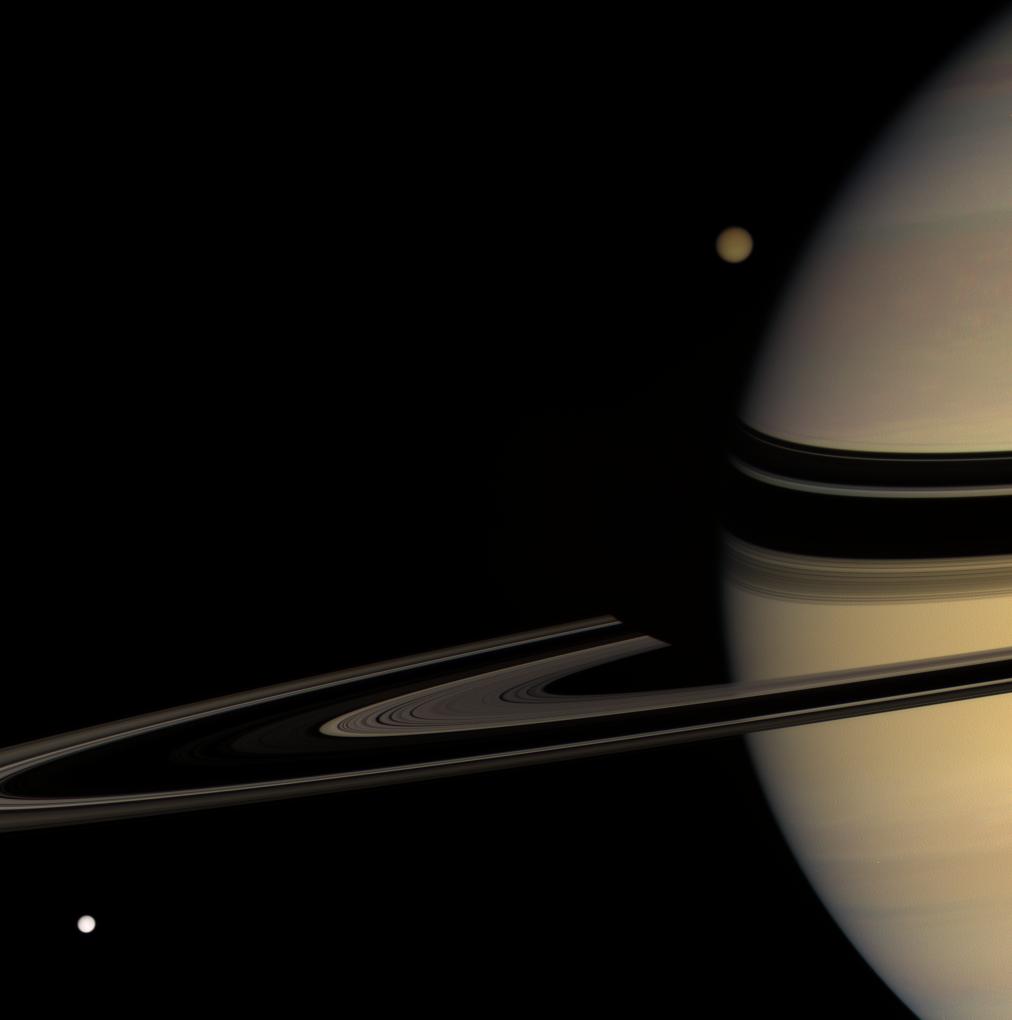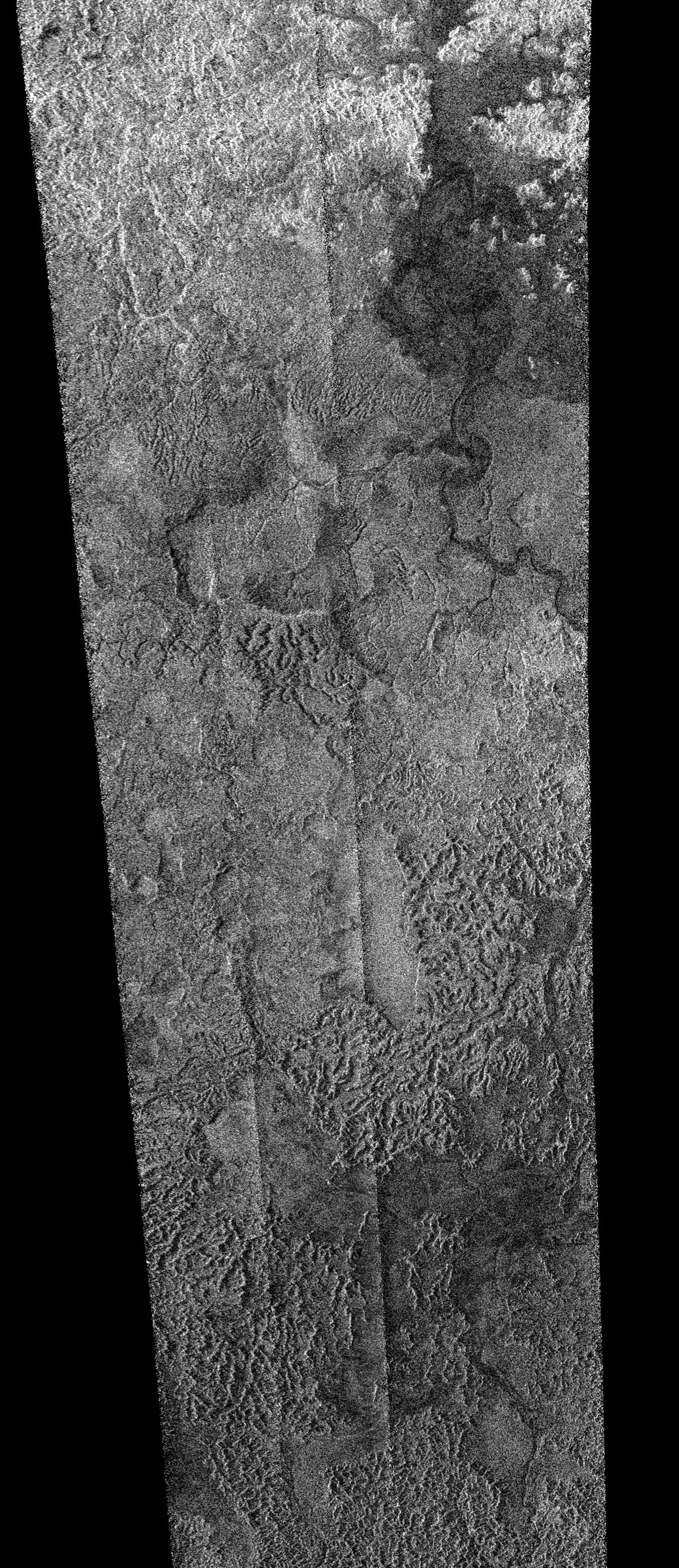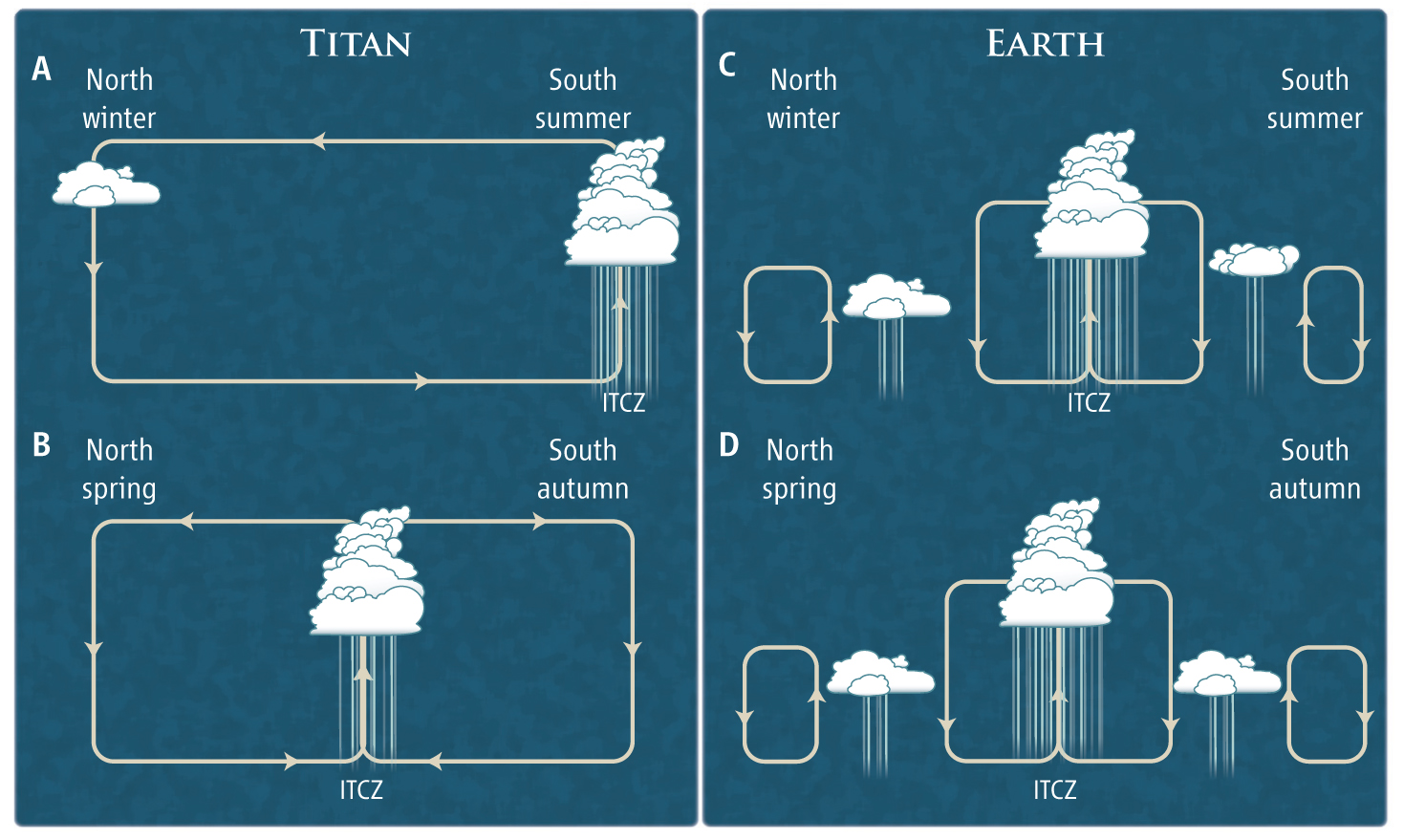Amazing Photos: Titan, Saturn's Largest Moon
Saturn's Moon Titan Is Slushy Inside
This artist's illustration shows the likely slushy interior structure of Saturn's moon Titan deduced from gravity field data collected by NASA's Cassini spacecraft. Full Story.
Giant Sand Dunes on Titan Shaped by Backward Winds
Scientists have used data from the Cassini radar mapper to map the global wind pattern on Saturn's moon Titan using data collected over a four-year period, as depicted in this image.
Ice on a Volcano
Wednesday, January 19, 2011: This topographic image shows an area of Saturn's moon Titan, known as Sotra Facula, which may harbor an ice volcano (cryovolcano). Finger-like flows suggest the presence of cryovolcanism. NASA's Cassini spacecraft collected data for this false-color image in which heights are exaggerated by a factor of 10.
--Tom Chao
titan-aerosol-moon-saturn
The blurring effects of Titan's aerosol are obvious in this image, where the orange moon peeks from behind two of Saturn's rings. Small, battered Epimetheus, another of Saturn's 62 moons, appears just above the rings.
titan northern half
Titan's northern half, where it's early spring, appears slightly darker than the southern half, where it's early fall, in this image taken on March 22, 2010. Like Earth, Titan has four distinct seasons, each of which lasts about seven of Earth's years.
Moons on the Move
Titan emerges from behind Saturn while Tethys streaks into view in this colorful scene on March 24, 2008. Titan is 5,150 kilometers (3,200 miles) wide; Tethys is 1,071 kilometers (665 miles) wide. Saturn's shadow darkens the far arm of the rings near the planet's limb.
Flowing Liquids on Titan
Abundant evidence for flowing liquids is seen in this view of Saturn’s moon Titan, from sinuous, wide river channels to shorter, more chaotic drainage patterns. This radar view of Titan's south pole was taken on Dec. 20, 2007.
Breaking space news, the latest updates on rocket launches, skywatching events and more!
Titan Approaches Saturn
Swathed in its thick blanket of atmosphere, frigid Titan approaches the brilliant limb of Saturn on March 14, 2008.
Titan - methane rain
NASA’s Cassini spacecraft chronicled the change of seasons as it captured clouds concentrated near the equator of Saturn’s largest moon, Titan, on Oct. 18, 2010.
Titan's Seasonal Precipitation
Cloudy with rain. Simplified global atmospheric circulation and precipitation pattern on Titan and Earth. Most precipitation occurs at the intertropical convergence zone, or ITCZ, where air ascends as a result of convergence of surface winds from the northern and southern directions. Titan’s ITCZ was previously near the south pole (A) but is currently on its way to the north pole (B). The seasonal migration of the ITCZ on Earth is much smaller (C and D). This image appears in a Perspective by Tetsuya Tokano titled, "Precipitation Climatology on Titan."

Space.com is the premier source of space exploration, innovation and astronomy news, chronicling (and celebrating) humanity's ongoing expansion across the final frontier. Originally founded in 1999, Space.com is, and always has been, the passion of writers and editors who are space fans and also trained journalists. Our current news team consists of Editor-in-Chief Tariq Malik; Editor Hanneke Weitering, Senior Space Writer Mike Wall; Senior Writer Meghan Bartels; Senior Writer Chelsea Gohd, Senior Writer Tereza Pultarova and Staff Writer Alexander Cox, focusing on e-commerce. Senior Producer Steve Spaleta oversees our space videos, with Diana Whitcroft as our Social Media Editor.

